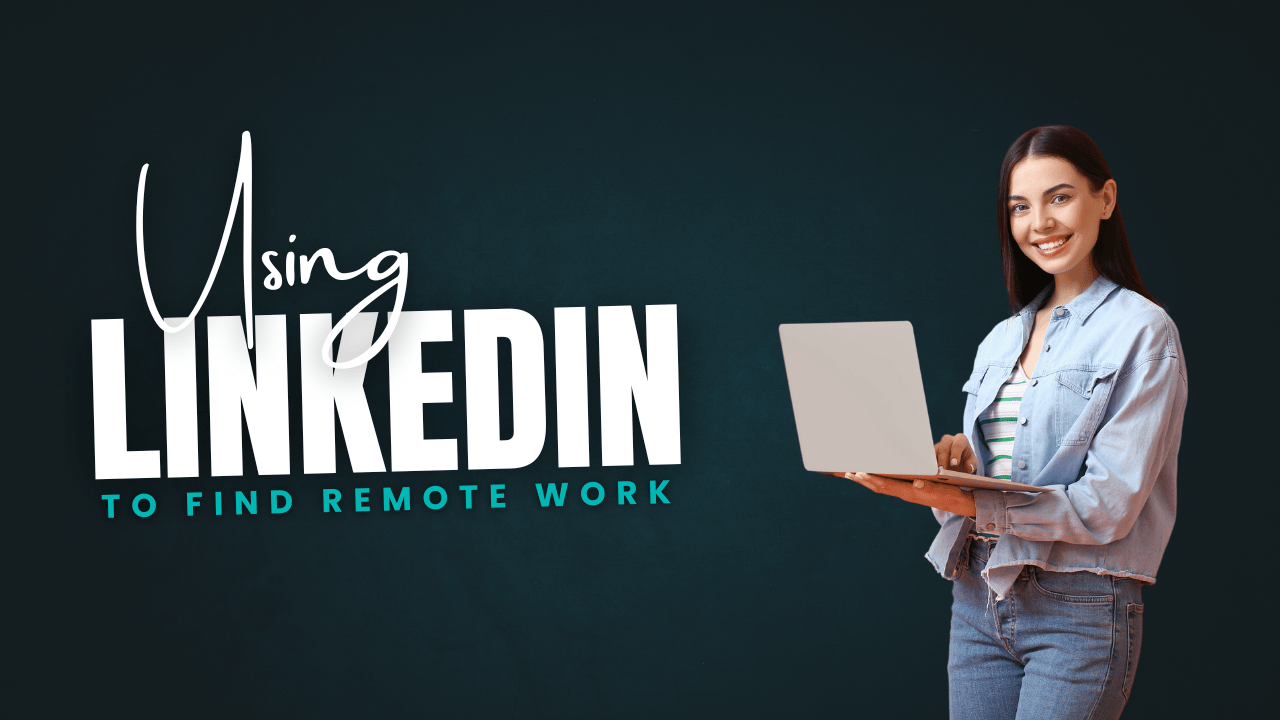If you’re looking for remote work, LinkedIn is still one of the best tools you can use! Many companies today not only post their jobs on LinkedIn but also check out applicants’ profiles before making hiring decisions.
Having a strong LinkedIn presence can open a lot of doors, especially if you’re hoping to land a flexible or work-from-home job.
When I search up my work from home job leads to post here, LinkedIn is usually one of the first sites I start checking.
Here are some simple ways to use LinkedIn to find remote jobs in 2025!
Use the Right Search Terms
The easiest way to start your job hunt on LinkedIn is to use the search bar.
Just type in phrases like “remote,” “work from home,” or “virtual” along with the kind of job you’re looking for.
For example, you could search “remote customer service” or “virtual administrative assistant.”
Once you hit search, you’ll see options on the left to narrow down your results. You can filter by:
- Date posted
- Location
- Company
- Experience level
- Industry
- Job type (full-time, part-time, contract)
Always use the “Date Posted” filter to find the newest jobs first! Employers often move fast to fill remote positions, and applying early can really boost your chances.
Apply Quickly
When you see a job you’re excited about, don’t wait! From what I understand, employers are much more likely to respond to applications submitted within the first 48 hours. After that, your chances drop a lot.
Being quick shows you’re serious, and it helps you stand out before the competition grows.
Join Relevant LinkedIn Groups
Groups on LinkedIn can be a hidden goldmine for finding remote jobs!
Look for groups related to your field, like “Remote Writers” or “Virtual Assistants Network.”
Inside these groups, people will share job leads, advice, and company tips. Sometimes employers even post openings directly to the group. Plus, being active in a group can help you build connections with others who might know about remote opportunities.
Don’t be shy about introducing yourself, either. Share a little about your work experience, skills, and what you’re looking for. You never know who might know someone hiring.
Build Strong Connections
Adding valuable connections on LinkedIn can definitely make a huge difference. Connect with former coworkers, clients, classmates, and others in your industry.
You should let your connections know you’re open to remote work. Sometimes a simple post saying you’re job searching can lead to amazing opportunities.
Personal recommendations also go a long way. People trust recommendations from friends and coworkers way more than from strangers. Networking might feel awkward at first, but it gets easier, and it does work.
Use Your Keywords Wisely
When building your LinkedIn profile, think about the keywords employers might use to search for someone like you. Make sure to include words like “remote,” “virtual,” “work from home,” and “telecommute” naturally in your headline, summary, and experience sections.
For example, instead of saying “Customer Service Representative,” you could say “Remote Customer Service Specialist.”
This helps your profile show up in search results when companies look for remote workers.
Follow Companies That Offer Remote Jobs
Another smart move is to follow companies that are known for offering remote jobs. This way, you’ll be the first to see when they post a new opening.
Some companies even let you set up job alerts so you’ll get an email when they post a remote-friendly position. That makes it really easy to stay ahead of the competition and get your application in early.
Watch Out for Scams
While scams are less common on LinkedIn than on some other job boards, you still have to be careful. Always double-check a company’s profile and website before applying.
If something feels off, like a job that seems too good to be true, trust your gut above all else. And never pay money to “apply” for a job.
While LinkedIn is great, a safer option if you’re worried about scams is to use FlexJobs, a site that screens all their listings for scams. They add new jobs five days a week, and everything posted is remote or flexible.
Here’s a handy work at home scam checklist you can follow if you’re really worried about getting taken in.
Top States for Remote Work
According to FlexJobs, the top states for remote job opportunities in 2025 include:
- New Jersey
- Utah
- Delaware
- Maryland
- District of Columbia
- Connecticut
- Washington
- Pennsylvania
- Massachusetts
- North Carolina
But the great thing about remote work today is that you can often live anywhere. Always check the location requirements on a job posting just to be sure, though.
Use FlexJobs In Addition to LinkedIn
Again, if you want to make your job search even easier (and safer), it’s smart to use FlexJobs, too.
Unlike many other job boards, FlexJobs hand-screens every single listing before it ever appears on their site. That means no scams, no junk, and no wasting your time!
FlexJobs focuses only on flexible, remote, and work-from-home jobs. Plus, there are no ads cluttering the site and no too-good-to-be-true “opportunities” that turn out to be scams. I have used the site for myself, and it’s such a relief to browse real jobs without having to second-guess everything!
Right now, you can try FlexJobs for just $2.95 for 14 days. That’s plenty of time to search their huge database, apply to jobs, and see if it’s the right fit for you. If you find even one good lead, it will be more than worth it.
You can sign up here and start exploring the job opportunities they list today.
Good luck to you!

Anna Thurman is a work at home blogger and mom of two. She has been researching and reviewing remote jobs for over 14 years. Her findings are published weekly here at Real Ways to Earn.

